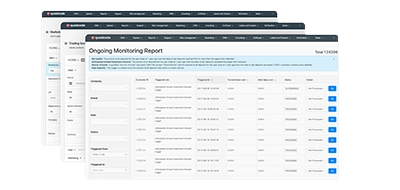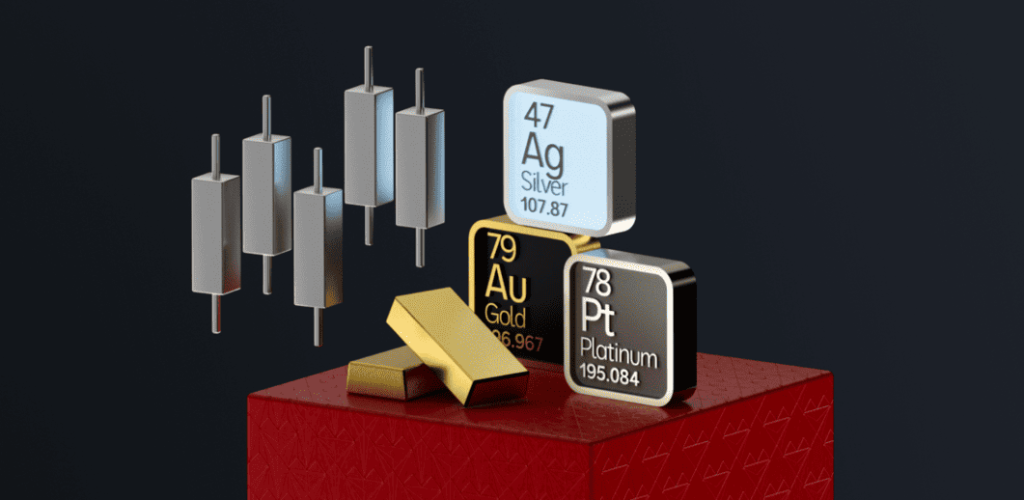Quay lại
Contents
Bộ dao động khối lượng (VO): Định nghĩa, các loại, tính năng, chiến lược, ưu và nhược điểm
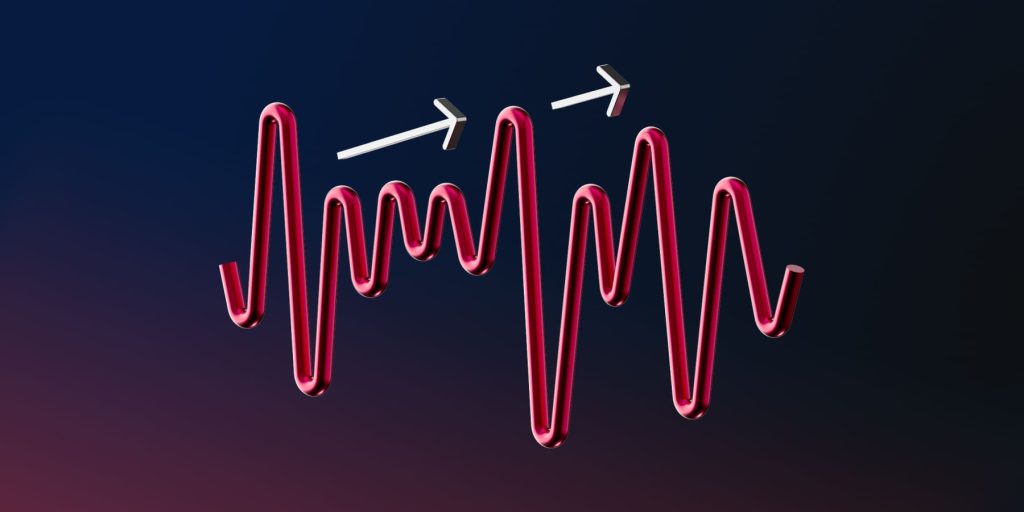

Demetris Makrides
Senior Business Development Manager

Vitaly Makarenko
Chief Commercial Officer
Chỉ báo dao động khối lượng (Volume Oscillator) là một công cụ kỹ thuật được sử dụng để phân tích khối lượng giao dịch. Chỉ báo này xác định sự chênh lệch giữa hai đường trung bình động về khối lượng. Biểu đồ thể hiện sự chênh lệch này giúp nhà giao dịch xác định các mô hình cho thấy áp lực mua và bán trên thị trường.
Những điểm chính cần ghi nhớ:
- Bộ dao động âm lượng có nghĩa là gì?
- Bộ dao động hoạt động như thế nào?
- Công thức nào được sử dụng để tính toán dao động?
- Các biến thể của Bộ dao động khối lượng.
- Làm thế nào các nhà giao dịch có thể kết hợp chỉ báo dao động với các công cụ kỹ thuật khác?
- Những chiến lược phổ biến nhất bao gồm Bộ dao động khối lượng là gì?
- Ưu và nhược điểm của Bộ dao động khối lượng.
Bộ dao động khối lượng là gì?
Mục tiêu cốt lõi của Chỉ báo dao động khối lượng là phân tích khối lượng giao dịch thị trường và chỉ ra mối quan hệ tương hỗ giữa khối lượng giao dịch và biến động giá. Chỉ báo dao động đo lường sự khác biệt giữa hai đường trung bình động và cho phép nhà giao dịch có được thông tin quan trọng và chính xác về biến động thị trường.
Chỉ báo dao động khối lượng (Volume Oscillator) là một công cụ giao dịch xung lực, xác định sự thay đổi trong áp lực mua và bán. Chỉ báo này xác định mức độ chênh lệch giữa khối lượng giao dịch và đường trung bình động. Dữ liệu được cung cấp giúp nhà giao dịch hiểu được sức mạnh của xu hướng hiện tại hoặc tìm ra một số điều kiện tiên quyết cho sự đảo ngược xu hướng.
Khi phân tích thông tin do Chỉ báo dao động khối lượng cung cấp, nhà giao dịch có thể xác định sức mạnh của xu hướng. Nếu chỉ báo đang tăng, điều đó cho thấy xu hướng tăng giá đang gia tăng. Đường giảm của chỉ báo cho thấy áp lực giảm giá.
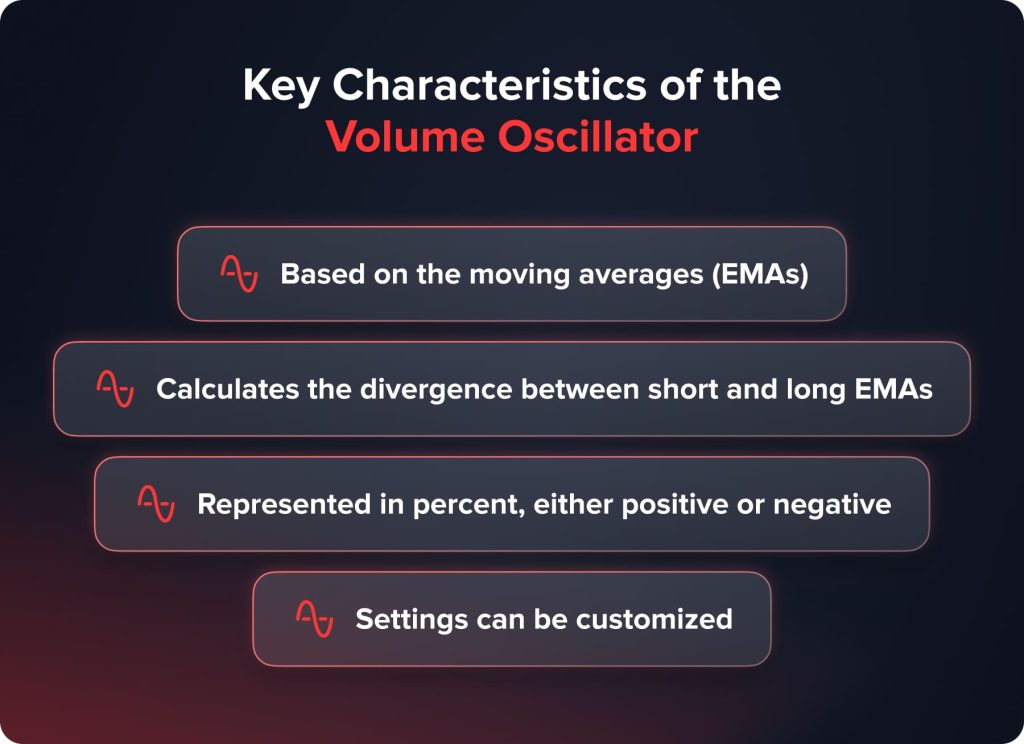
Bộ dao động hoạt động như thế nào?
Chúng ta hãy thêm công cụ vào biểu đồ để minh họa chỉ báo dao động khối lượng trông như thế nào.
Khi chúng ta thêm chỉ báo vào biểu đồ, nó sẽ được hiển thị trong một cửa sổ riêng, bên dưới biểu đồ chính. Công cụ này trông giống như một đường thẳng di chuyển lên trên hoặc xuống dưới mức 0%.
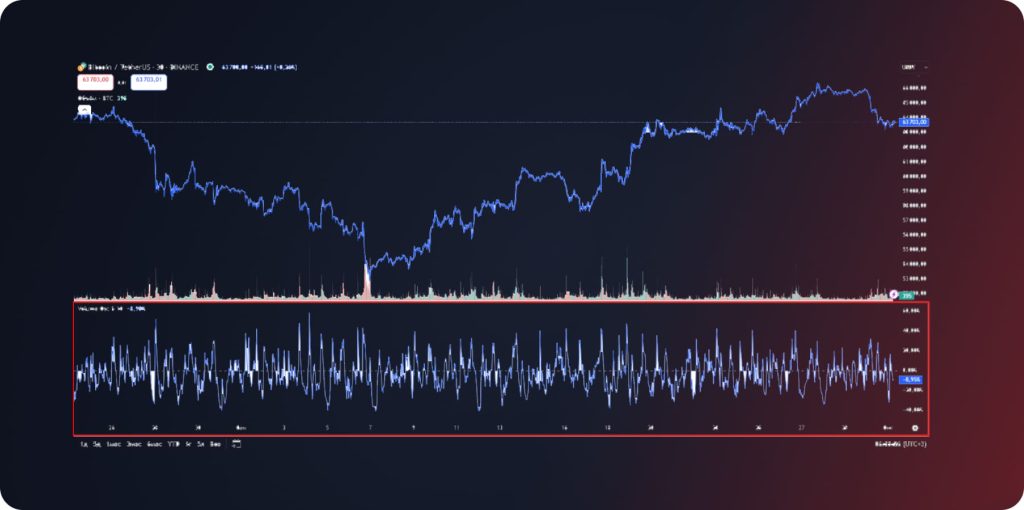
Giá trị dao động khối lượng được tính theo công thức:
Vol Osc = 100 * (EMA ngắn – EMA dài) / EMA dài
- EMA ngắn – Đường trung bình động hàm mũ với chu kỳ ngắn hơn được áp dụng cho khối lượng giao dịch;
- EMA dài – Đường trung bình động hàm mũ với chu kỳ dài hơn được áp dụng cho khối lượng giao dịch.
Khi nói về cài đặt mặc định, EMA 5 (ngắn) và EMA 10 (dài) được sử dụng, nhưng nhà giao dịch có thể thay đổi cài đặt và xây dựng Bộ dao động khối lượng cho các giai đoạn khác nếu cần. Hơn nữa, bạn có thể thay đổi tổng thời gian được sử dụng để tính toán (từ 1 tick đến 12 tháng).
Như vậy, chúng ta đã hiểu chỉ báo này trông như thế nào và các thiết lập mà nhà giao dịch có thể thay đổi khi sử dụng công cụ này. Hãy cùng tìm hiểu sâu hơn về cách thức hoạt động của Bộ dao động Khối lượng.
Các yếu tố chính của chỉ số
Bộ dao động khối lượng bao gồm các thành phần sau:
- Đường trung bình động hàm mũ ngắn hạn và dài hạn. Các chỉ báo dao động khối lượng so sánh đường trung bình động ngắn hạn với đường trung bình động dài hạn. Việc so sánh này làm mịn dữ liệu và giảm nhiễu thị trường; đó là lý do tại sao các nhà giao dịch có thể dễ dàng xác định xu hướng hơn.
- Mức quá mua và quá bán. Chỉ báo dao động khối lượng và các biến thể của nó cho thấy các mức mà một tài sản đang ở trạng thái quá mua hoặc quá bán. Các mức này là dấu hiệu của các điều kiện mua và bán cực đoan, giúp các nhà giao dịch dự đoán các đợt đảo chiều xu hướng tiếp theo. Khi đường dao động chạm đến mức quá mua, nó cho thấy thị trường đã sẵn sàng cho một đợt điều chỉnh giảm, và ngược lại.
- Phân kỳ. Phân kỳ xảy ra khi giá của một tài sản và đường dao động di chuyển ngược chiều nhau. Tình huống này cho thấy xu hướng hiện tại đã cạn kiệt và thị trường đang sẵn sàng cho một sự đảo chiều. Ví dụ, giá của một tài sản tăng cao hơn, nhưng chỉ báo Khối lượng giao dịch giảm đều đặn – áp lực mua yếu đi, và đã đến lúc mở vị thế bán.
Việc hiểu các yếu tố được đề cập ở trên cực kỳ quan trọng đối với các nhà giao dịch muốn sử dụng Chỉ báo dao động khối lượng trong chiến lược của họ.
Nguyên lý hoạt động của bộ dao động khối lượng
Công cụ này dựa trên hai đường EMA và tính toán sự khác biệt giữa các đường trung bình động. Độ lệch cho thấy sự hội tụ/phân kỳ của khối lượng giao dịch theo thời gian.
- Khi đường EMA ngắn cao hơn đường EMA dài, đường dao động đang di chuyển bên trong một 'vùng dương'.
- Khi đường EMA dài cao hơn đường EMA ngắn, đường dao động đang di chuyển vào bên trong 'vùng âm'.
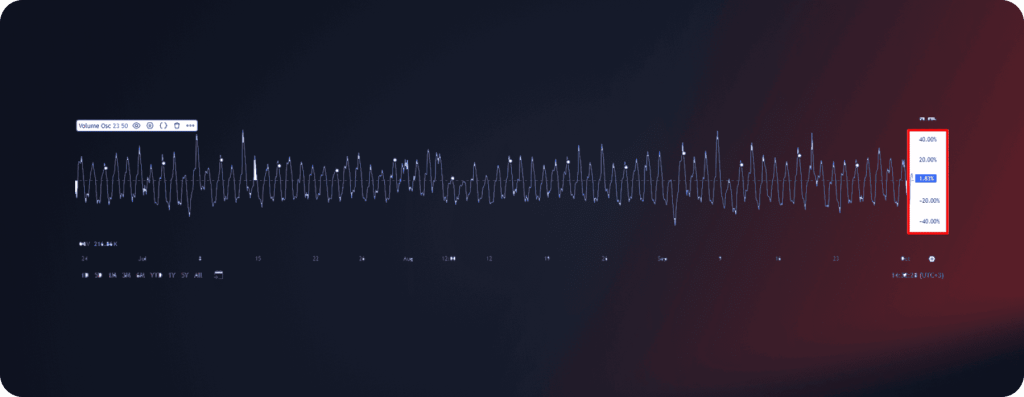
Làm thế nào để cấu hình cài đặt của Bộ dao động âm lượng?
Khi thêm công cụ vào biểu đồ, các thiết lập chủ yếu bao gồm các chu kỳ sau: 5 cho đường trung bình động hàm mũ ngắn hạn và 10 cho đường trung bình động hàm mũ dài hạn. Các nhà giao dịch chuyên nghiệp thay đổi thiết lập để giảm nhiễu cho chỉ báo. Họ thay đổi chu kỳ EMA ngắn hạn thành 23 và chọn 50 cho chu kỳ EMA dài hạn.
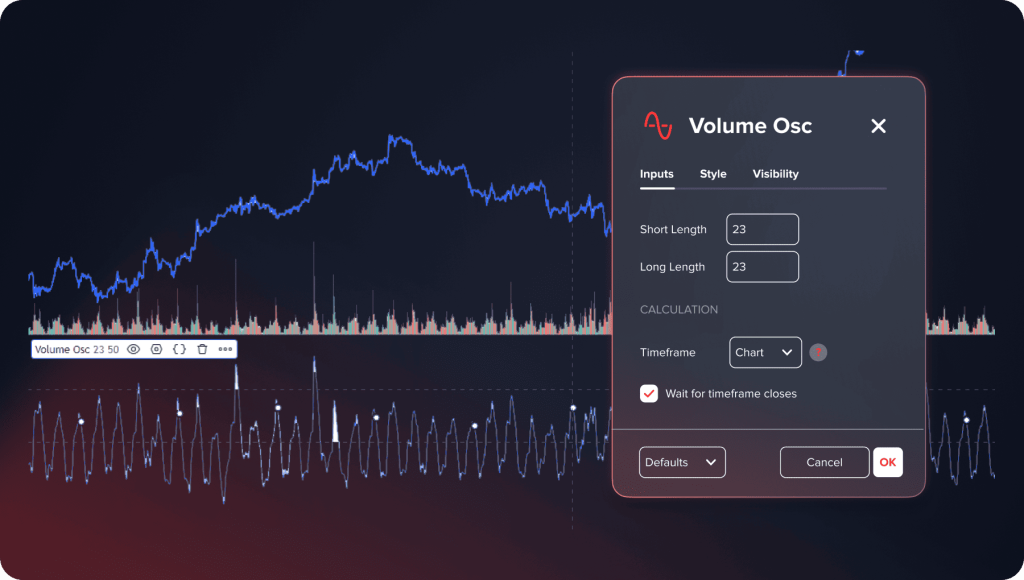
Về màu sắc và các thiết lập đồ họa khác, bạn có thể sử dụng bất kỳ tùy chọn nào bạn muốn vì chúng không ảnh hưởng đến hiệu quả.
Tín hiệu giao dịch được cung cấp bởi Bộ dao động khối lượng
Các nhà giao dịch chuyên nghiệp coi chỉ báo này là một trong những công cụ hiệu quả nhất. Làm thế nào để sử dụng công cụ này trong phân tích kỹ thuật? Có một số mô hình mà các nhà giao dịch cần lưu ý:
- Sự phân kỳ giữa biến động giá của một tài sản và Chỉ báo dao động khối lượng. Khi một nhà giao dịch nhận thấy tình hình thị trường khi giá của một tài sản tăng lên và đường chỉ báo dao động giảm xuống, điều này cho thấy khả năng đảo ngược xu hướng cao. Ví dụ, giá Bitcoin tăng khi chỉ báo dao động cho thấy biến động ngược lại. Chúng tôi kết luận rằng xu hướng hiện tại đã cạn kiệt và giá của tiền điện tử sẽ đi xuống.
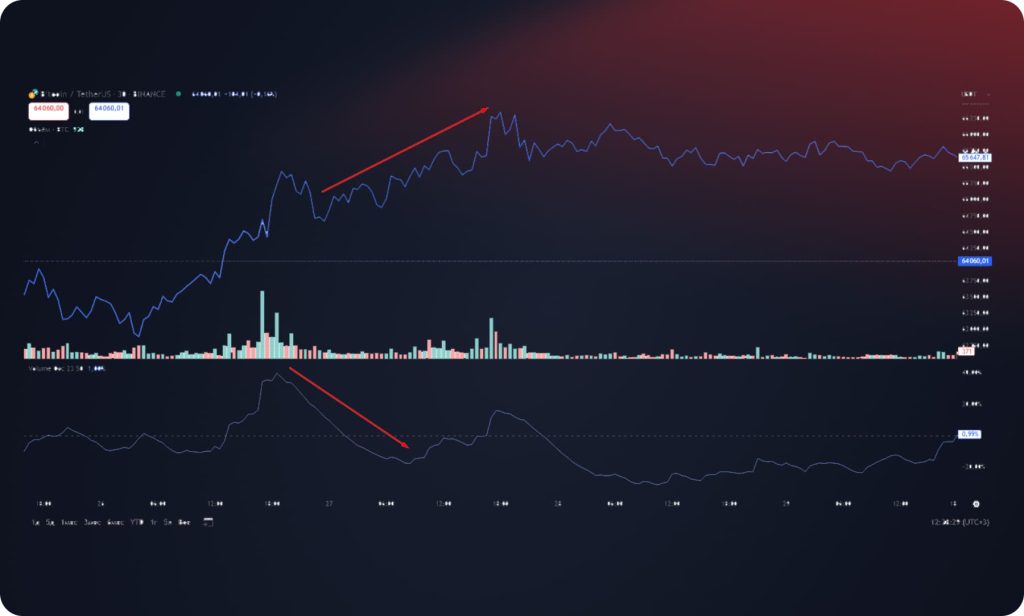
- Sự hội tụ giữa biến động giá của một tài sản và Chỉ báo dao động khối lượng. Khi một nhà giao dịch quan sát thấy giá của một tài sản tăng lên và đường của chỉ báo dao động cũng di chuyển theo cùng hướng, thị trường được đặc trưng bởi một xu hướng tăng khá mạnh. Trong tình huống như vậy, các nhà giao dịch sẽ mở vị thế theo xu hướng.
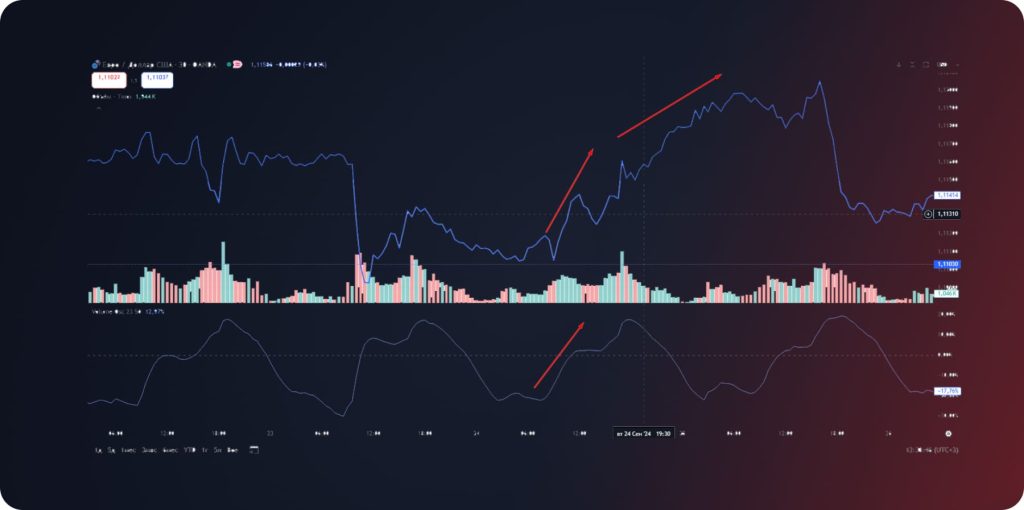
- Các mức quá mua và quá bán. Khi đường dao động chạm vào vùng quá mua hoặc quá bán, khả năng cao là giá sẽ tiếp tục đi theo hướng ngược lại. Khi nói về loại Dao động Khối lượng tiêu chuẩn, các vùng quá mua và quá bán nằm ở mức cao hơn 40% và thấp hơn -40%.
Biến thể của Bộ dao động khối lượng
Chỉ báo dao động khối lượng (Volume Oscillator) là công cụ cơ bản được sử dụng để phân tích khối lượng giao dịch; ngoài ra, danh mục này còn bao gồm các công cụ kỹ thuật khác dựa trên cùng một nguyên tắc. Các chỉ báo dao động khối lượng phổ biến nhất là gì?
Dòng tiền Chaikin
Chỉ báo này được phát triển bởi Mark Chaikin, một nhà môi giới và phân tích nổi tiếng. Theo lý thuyết của ông, các đường tích lũy/phân phối, tính đến cả giá và khối lượng, sẽ mở ra những hiểu biết độc đáo về xu hướng thị trường.
Chỉ số CMF dựa trên hai thành phần chính - khối lượng dòng tiền và hệ số nhân dòng tiền. Khối lượng dòng tiền được tính bằng cách nhân giá trung bình của một tài sản với khối lượng giao dịch. Hệ số nhân dòng tiền được tính toán tùy thuộc vào việc giá đang tăng hay giảm.
Chaikin Money Flow cung cấp cho các nhà giao dịch các tín hiệu sau:
- Nếu CMF dương và tiếp tục tăng, điều này cho thấy áp lực mua và xu hướng tăng có thể tiếp tục.
- Nếu CMF âm và tiếp tục giảm, điều này cho thấy áp lực bán và xu hướng giảm có thể tiếp tục.
- Nếu CMF di chuyển quanh mức 0, sự cân bằng giữa người mua và người bán xuất hiện, xu hướng có thể không chắc chắn.
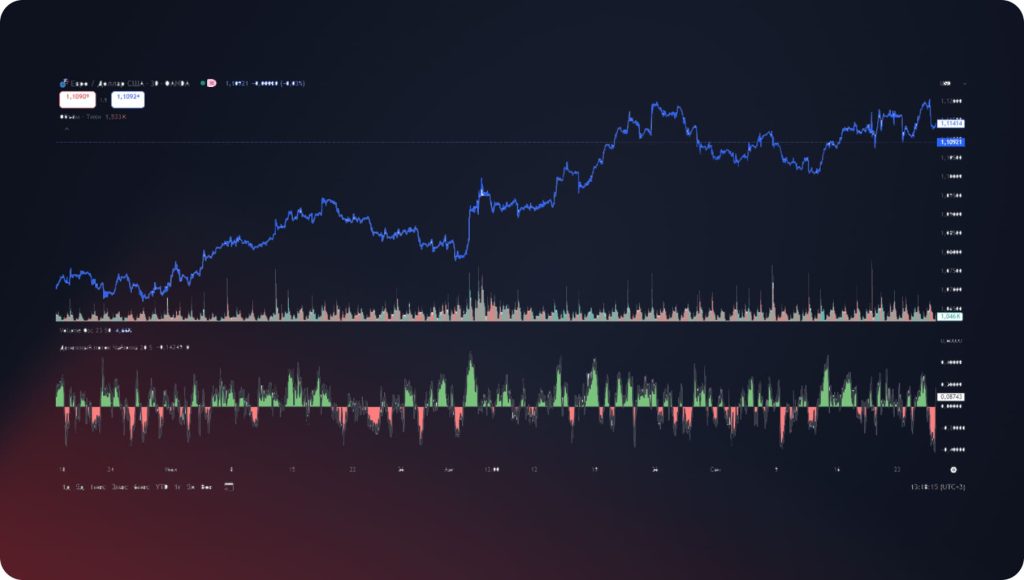
Khối lượng cân bằng
Chỉ báo Khối lượng Cân bằng (On Balance Volume) tính toán mối quan hệ tương hỗ giữa biến động giá và biến động khối lượng. Công cụ này dựa trên lý thuyết cho rằng biến động giá đáng kể luôn đi kèm với những thay đổi khối lượng mạnh. Ví dụ, khi các nhà đầu tư lớn bắt đầu đầu tư ồ ạt vào một tài sản, khối lượng giao dịch của tài sản đó sẽ tăng mạnh. Theo thời gian, những biến động này cũng ảnh hưởng đến giá của tài sản.
Khối lượng cân bằng được hiển thị ở cuối biểu đồ. Đường này tăng cao hơn khi giá tăng và giảm khi giá giảm. Một cú nhảy vọt trong chỉ báo cho thấy sự tham gia của những người chơi lớn, và một sự tăng đều đặn cho thấy phần còn lại của đám đông đã tham gia giao dịch.
Sau đây là những đặc điểm chính của nhạc cụ này:
- Tính toán mối quan hệ phụ thuộc giữa biến động giá và biến động khối lượng.
- Thể hiện tâm trạng của những người chơi chính.
- Giúp dự đoán biến động giá tiếp theo.
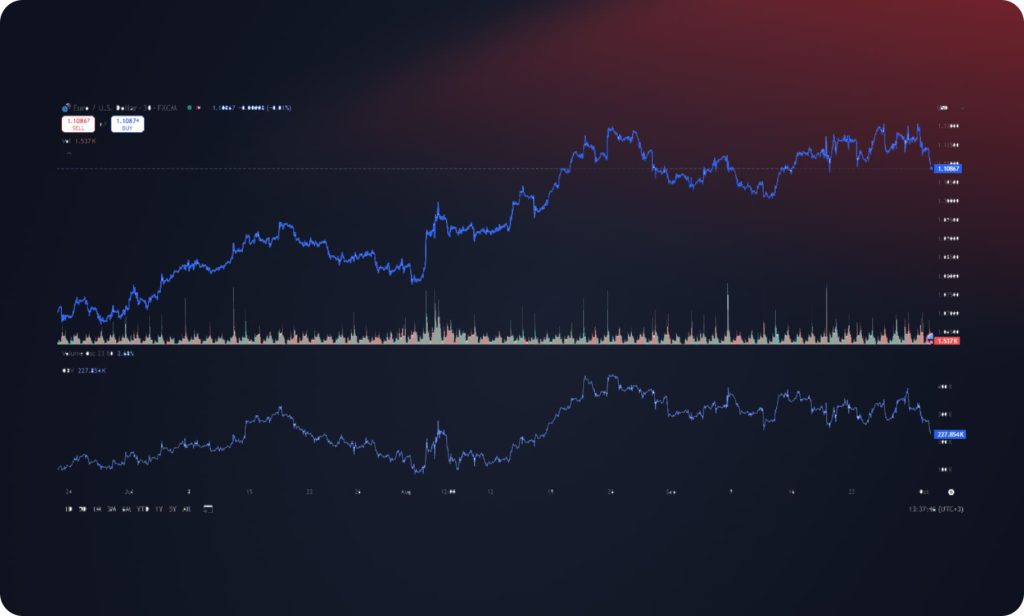
Bộ dao động Klinger
Chỉ báo dao động Klinger là một chỉ báo kỹ thuật dựa trên khối lượng giao dịch, được sử dụng để so sánh khối lượng giao dịch với giá nhằm dự đoán sự đảo chiều giá. Công cụ này được Stephan Klinger giới thiệu vào năm 1977.
Chỉ báo này bao gồm hai đường, biểu thị KVO và đường trung bình động hàm mũ (EMA). EMA được sử dụng để xác định đường trung bình động 13 kỳ và là chỉ báo quan trọng cho việc mua hoặc bán. Chỉ báo này cho thấy biến động khối lượng ảnh hưởng đến mức giá như thế nào.
Chỉ báo Klinger Oscillator giúp xác định tín hiệu mua và bán thông qua các đường trung bình động 13 kỳ. Về mặt này, nó hoạt động tương tự như chỉ báo MACD. Nếu Klinger Oscillator vượt lên trên đường tín hiệu, nhà giao dịch có thể chuyển sang vị thế mua. Nếu Klinger Oscillator nằm dưới đường tín hiệu, nó cho thấy tâm lý bán.
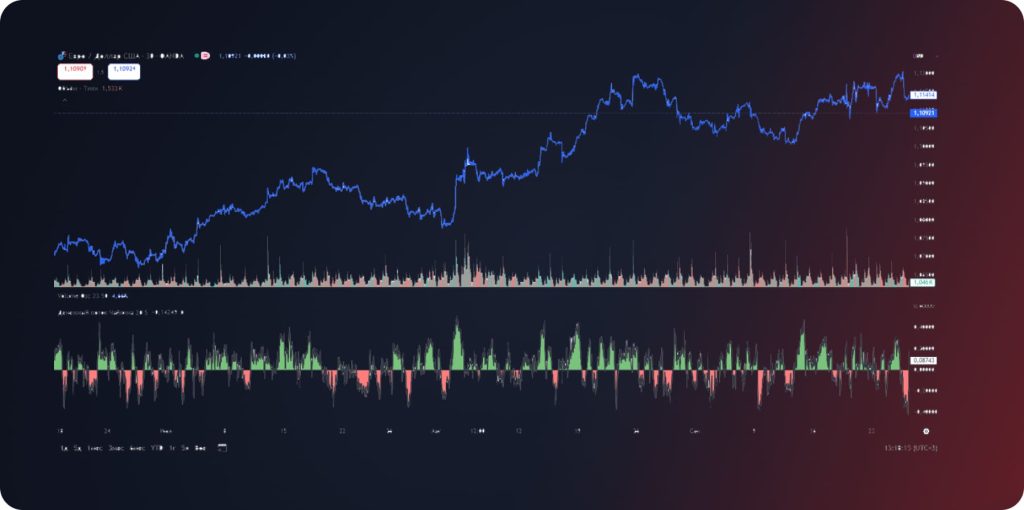
Ưu và nhược điểm của Bộ dao động khối lượng
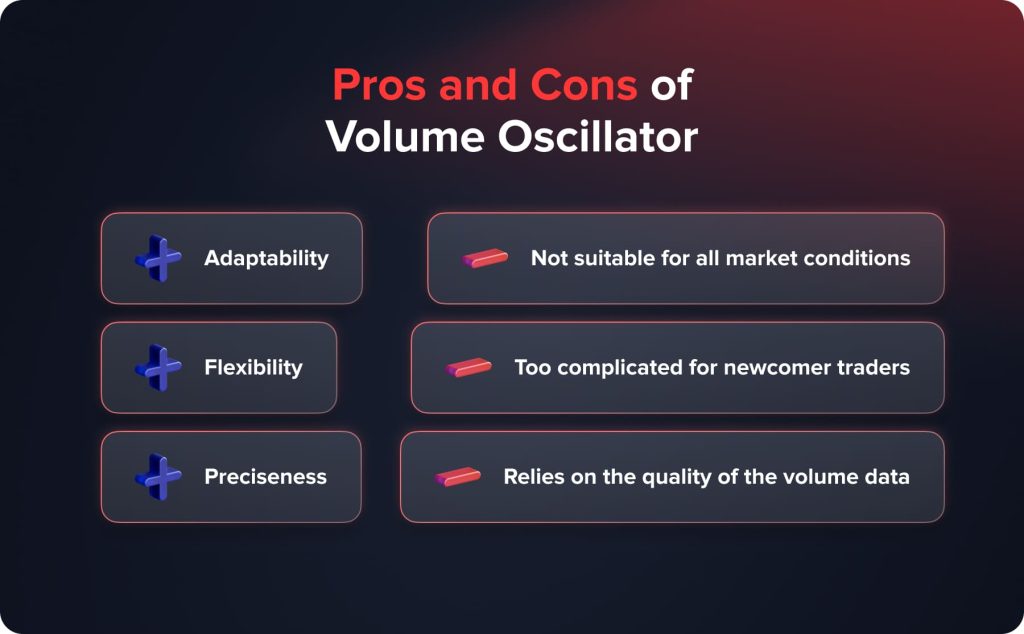
Những ưu điểm chính của chỉ số này như sau:
- Khả năng thích nghi. Công cụ này hiệu quả trên nhiều thị trường tài chính và khung thời gian khác nhau. Các nhà giao dịch có thể sử dụng Volume Oscillator cho cổ phiếu, Forex, kim loại, tiền điện tử và các tài sản khác.
- Sự linh hoạt. Các nhà giao dịch dễ dàng kết hợp các chỉ báo dao động khối lượng với các công cụ kỹ thuật khác để có được tín hiệu giao dịch chính xác nhất có thể.
- Độ chính xác. Trong trường hợp cấu hình đúng, Volume Oscillator cung cấp cho các nhà giao dịch các tín hiệu giao dịch chính xác với độ nhiễu thị trường tối thiểu.
Về những rủi ro và hạn chế của công cụ này, những rủi ro và hạn chế sau đây được chỉ ra:
- Công cụ này không phù hợp với mọi điều kiện thị trường.
- Chỉ báo dao động khối lượng quá phức tạp đối với những người giao dịch mới.
- Chỉ số này dựa vào chất lượng dữ liệu khối lượng, thông tin về giá không được tính đến.
Chiến lược giao dịch dựa trên chỉ báo dao động khối lượng
Sau đây là các chiến lược giao dịch phổ biến nhất bao gồm Volume Oscillator:
- Giao dịch theo xu hướng. Khi bạn thấy sự hội tụ giữa chỉ báo dao động và biến động giá, hãy mở vị thế theo xu hướng thị trường hiện tại. Sử dụng các công cụ bổ sung sau để có tín hiệu chính xác hơn: Đường trung bình động, Parabolic SAR, v.v.
- Giao dịch đảo chiều. Mở các vị thế ngược lại khi bạn quan sát thấy sự phân kỳ giữa chỉ báo dao động và biến động giá. Để có tín hiệu chính xác hơn, hãy dựa vào các công cụ bổ sung sau: RSI, Stochastic, v.v.
- Giao dịch đột phá. Khi giá của một tài sản phá vỡ đường hỗ trợ hoặc kháng cự, sự mở rộng khối lượng trên Volume Oscillator sẽ chứng minh tín hiệu đó. Hơn nữa, bạn có thể kết hợp chỉ báo này với Dải Bollinger, Kênh Keltner, Kênh Donchian, v.v.
Tóm lại: Chỉ báo dao động khối lượng có hữu ích cho nhà giao dịch không?
Chỉ báo dao động khối lượng (Volume Oscillator) thuộc nhóm các chỉ báo hiệu quả và hữu ích nhất. Nó thể hiện sự hội tụ và phân kỳ giữa biến động giá và biến động khối lượng. Dữ liệu được cung cấp giúp các nhà giao dịch xác định xu hướng hiện tại, sức mạnh của xu hướng và khả năng đảo chiều. Hơn nữa, chỉ báo dao động khối lượng còn cho biết các mức quá mua và quá bán. Các nhà giao dịch chuyên nghiệp không dựa vào các công cụ này một cách riêng lẻ. Các chiến lược giao dịch hiệu quả kết hợp chỉ báo dao động khối lượng với các công cụ phổ biến khác để có được tín hiệu chính xác hơn.
Đã cập nhật:
19 tháng 12, 2024
